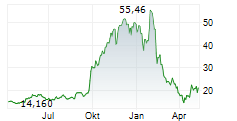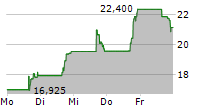
- Phase 1a results support further development of TX000045 ("TX45") for Group 2 Pulmonary Hypertension in HFpEF ("PH-HFpEF"), based on favorable pharmacokinetic profile and impact on renal plasma flow ("RPF")
- TX45 showed a favorable safety profile, with no observed injection site reactions, immunogenicity, or detection of anti-drug antibodies
- RPF-based exposure-response model enabled APEX Phase 2 dose selection
- Upcoming topline results from the ongoing TX45 clinical program includes Phase 1b hemodynamic, proof-of-concept trial data expected in late 1Q or early 2Q'2025, and APEX Phase 2 clinical trial data expected in 2026
WATERTOWN, Mass., Nov. 11, 2024 (GLOBE NEWSWIRE) -- Tectonic Therapeutic, Inc. (NASDAQ: TECX) ("Tectonic") a clinical stage biotechnology company focused on the discovery and development of therapeutic proteins and antibodies that modulate the activity of G-protein coupled receptors ("GPCRs"), today announced detailed results from the Phase 1a clinical trial of its lead asset, TX45, a long-acting, Fc-relaxin fusion protein. The poster will be presented at the American Heart Association (AHA) Scientific Sessions on November 16, 2024 from 3-4pm EST in Chicago, Illinois. Favorable topline results from the TX45 Phase 1a clinical trial were announced on September 19, 2024, along with the dose selection for the TX45 APEX Phase 2 trial that is currently underway in patients with PH-HFpEF.
"Favorable Phase 1a results allowed us to confidently move ahead with our APEX Phase 2 clinical trial. We continue to be very enthusiastic about advancing TX45 as a potential best-in-class, long-acting relaxin therapeutic for patients with PH-HFpEF," said Alise Reicin, M.D., President and Chief Executive Officer of Tectonic. "Both of our ongoing clinical studies in patients with PH-HFpEF remain on track with topline results from our Phase 1b hemodynamic trial expected in late 1Q'2025 or early 2Q'2025, followed by topline results from our APEX Phase 2, 24-week clinical trial anticipated in 2026."
The Phase 1a single ascending dose ("SAD") clinical trial assessed the safety and tolerability of TX45 in 55 healthy volunteers. Additionally, the Phase 1a clinical trial evaluated pharmacokinetic ("PK") and pharmacodynamic ("PD") measures of TX45 based on relaxin's known ability to increase RPF in order to create an exposure-response model for Phase 2 dose selection.
Phase 1a Highlights:
Safety Results: TX45 was well tolerated with no drug-related severe adverse events, no evidence of immune-mediated clearance, and no antidrug antibodies or injection site reactions.
- The most common Treatment Emergent Adverse Event was orthostatic tachycardia (increase in heart rate while standing), which was transient and not associated with decreases in blood pressure.
- No clinically meaningful changes in laboratory values, ECG intervals or blood pressure were observed.
Pharmacokinetic Results: TX45 demonstrated a potential best-in-class half-life for a long-acting relaxin therapy. Final analysis showed that a single dose of TX45 had approximately 50% subcutaneous bioavailability with a half-life (t1/2) of two to three weeks (14-20 days).
Pharmacodynamic Results and Exposure Response-Modeling: TX45 administration resulted in increased RPF across all doses. Comparing TX45 blood levels to RPF allowed for the development of a robust exposure-response model for Phase 2 dose selection.
- The exposure-response model is a nonlinear, mixed-effects Emax model that included repeated measurements of RPF for each subject in the study (>200 data points), resulting in a modeled Emax (maximum effect) of 33% (SE 3.3%, p < 0.0001).
- The magnitude of effect of TX45 on RPF was consistent with other relaxin therapeutics. Mean dose cohort effects (n=6 per cohort) demonstrated increased RPF of up to 42%.
- The model also demonstrated that the two doses selected for the APEX Phase 2 study, 300 mg every two weeks (Q2W) and 300 mg every four weeks (Q4W), yield maximal or near-maximal PD effects on human RPF at steady state trough.
"Results from the Phase 1a clinical trial confirms why we are enthusiastic about TX45 as a potential long-acting relaxin therapeutic. TX45 was clearly active, was well tolerated and demonstrated a prolonged half-life," said Marcella K Ruddy, M.D., Chief Medical Officer of Tectonic. "We are excited to build on this positive Phase 1a study with the ongoing single-dose Phase 1b hemodynamic trial and the APEX Phase 2 clinical trial. Results from these trials are expected to define the therapeutic effects of TX45 and enable us to understand its potential role in the treatment of patients with PH-HFpEF."
About the APEX Phase 2 Clinical Trial for TX45 in Pulmonary Hypertension with HFpEF
TX45 is being evaluated in the APEX Phase 2 clinical trial (NCT06616974) in patients with Group 2 Pulmonary Hypertension in Heart Failure with Preserved Ejection Fraction ("PH-HFpEF"). The trial is designed to evaluate efficacy in the broad PH-HFpEF population and enrich for the subset of Group 2 PH patients with a more severe form of disease. The trial plans to enroll up to 180 subjects who will be randomized to one of two dose regimens of TX45 or placebo. TX45 will be administered by subcutaneous injection over 24-weeks followed by an 8-week follow-up period. The primary and secondary endpoints of the trial include change from baseline in pulmonary vascular resistance (PVR) as well as other relevant hemodynamic changes. It will also explore TX45's effect on change in six-minute walk distance. TX45 aims to address the physiological abnormalities of PH-HFpEF through its effects on both pulmonary and systemic vasodilation, cardiac diastolic dysfunction and potential remodeling in both the pulmonary vessels and cardiac muscle, which could translate into a clinically meaningful improvement in exercise capacity in these patients. Additional information on the ongoing APEX clinical trial can be accessed at clinicaltrials.gov.
About TX45, a long-acting Fc-relaxin fusion protein
TX45 is an Fc-relaxin fusion protein with optimized pharmacokinetics and biophysical properties that activates the RXFP1 receptor, the G-protein coupled receptor target of the hormone relaxin. Relaxin is an endogenous protein, expressed at low levels in both men and women that is a pulmonary and systemic vasodilator with lusitropic, anti-fibrotic and anti-inflammatory activity. In normal human physiology, relaxin is upregulated during pregnancy where it exerts vasodilative effects, reduces systemic and pulmonary vascular resistance and increases cardiac output to accommodate the increased demand for oxygen and nutrients from the developing fetus. Relaxin also exerts anti-fibrotic effects on pelvic ligaments to facilitate delivery of the baby.
About Group 2 Pulmonary Hypertension in HFpEF
The World Health Organization has defined 5 groups of pulmonary hypertension ("PH"). Tectonic is focused on the Group 2 subtype, a condition that develops due to left-sided heart disease, specifically pulmonary hypertension secondary to left heart failure with preserved ejection fraction ("PH-HFpEF"). In patients with PH-HFpEF, chronic heart failure leads to increased blood pressure in the pulmonary arteries, exerting severe strain on the right side of the heart, which adapts poorly to the increased pressure. This increased pulmonary pressure gradually causes worsening exercise capacity, shortness of breath and right-sided heart failure which can lead to death. Although several Group 1 PH (Pulmonary Arterial Hypertension, PAH) medications have been explored in Group 2 PH, to date, no medications have been approved for its treatment.
About Tectonic
Tectonic is a biotechnology company focused on the discovery and development of therapeutic proteins and antibodies that modulate the activity of G-protein coupled receptors ("GPCRs"). Leveraging its proprietary technology platform called GEODe (GPCRs Engineered for Optimal Discovery), Tectonic is focused on developing biologic medicines that overcome the existing challenges of GPCR-targeted drug discovery and harness the human body to modify the course of disease. Tectonic focuses on areas of significant unmet medical need, often where therapeutic options are poor or nonexistent, as these are areas where new medicines have the potential to improve patient quality of life. Tectonic is headquartered in Watertown, Massachusetts. For more information, please visit www.tectonictx.com and follow on LinkedIn.
Forward-Looking Statements
This press release contains "forward-looking statements" within the meaning of the "safe harbor" provisions of the Private Securities Litigation Reform Act of 1995. All statements in this press release other than statements of historical facts are "forward-looking statements. These statements may be identified by words such as "aims," "anticipates," "believes," "could," "estimates," "expects," "forecasts," "goal," "intends," "may," "plans," "possible," "potential," "seeks," "will" and variations of these words or similar expressions that are intended to identify forward-looking statements, although not all forward-looking statements contain these words. Forward-looking statements in this press release include statements regarding: the design, objectives, initiation, timing, progress and results of clinical trials of Tectonic's product candidates, including the ongoing Phase 1b and Phase 2 clinical trials for TX45 in Group 2 PH-HFpEF; and the potential properties and benefits of TX45. These forward-looking statements are based on Tectonic's expectations and assumptions as of the date of this press release. Each of these forward-looking statements involves risks and uncertainties that could cause Tectonic's clinical development programs, future results or performance to differ materially from those expressed or implied by the forward-looking statements. Many factors may cause differences between current expectations and actual results, including: the potential that success in preclinical testing and earlier clinical trials does not ensure that later clinical trials will generate the same results or otherwise provide adequate data to demonstrate the efficacy and safety of a product candidate; the impacts of macroeconomic conditions, including the conflict in Ukraine and the conflict in the Middle East, heightened inflation and uncertain credit and financial markets, on Tectonic's business, clinical trials and financial position; unexpected safety or efficacy data observed during preclinical studies or clinical trials; clinical trial site activation or enrollment rates that are lower than expected; Tectonic's ability to realize the benefits of its collaborations and license agreements; changes in expected or existing competition; changes in the regulatory environment; the uncertainties and timing of the regulatory approval process; and unexpected litigation or other disputes. Other factors that may cause Tectonic's actual results to differ from those expressed or implied in the forward-looking statements in this press release are identified under the heading "Risk Factors" in Tectonic's quarterly report on Form 10-Q filed with the SEC on August 14, 2024, and in other filings that Tectonic makes and will make with the SEC in the future. Tectonic expressly disclaims any obligation to update any forward-looking statements contained herein, whether as a result of any new information, future events, changed circumstances or otherwise, except as otherwise required by law. For more information, please visit www.tectonictx.com and follow on LinkedIn.



